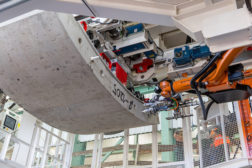Home » HS2
Articles Tagged with ''HS2''
Construction Technology
Geotechnical Modeling Software Advances Design Work on HS2 Rail Project
Read MoreThe latest news and information
#1 Source for Construction News, Data, Rankings, Analysis, and Commentary
JOIN ENR UNLIMITEDCopyright ©2024. All Rights Reserved BNP Media.
Design, CMS, Hosting & Web Development :: ePublishing










